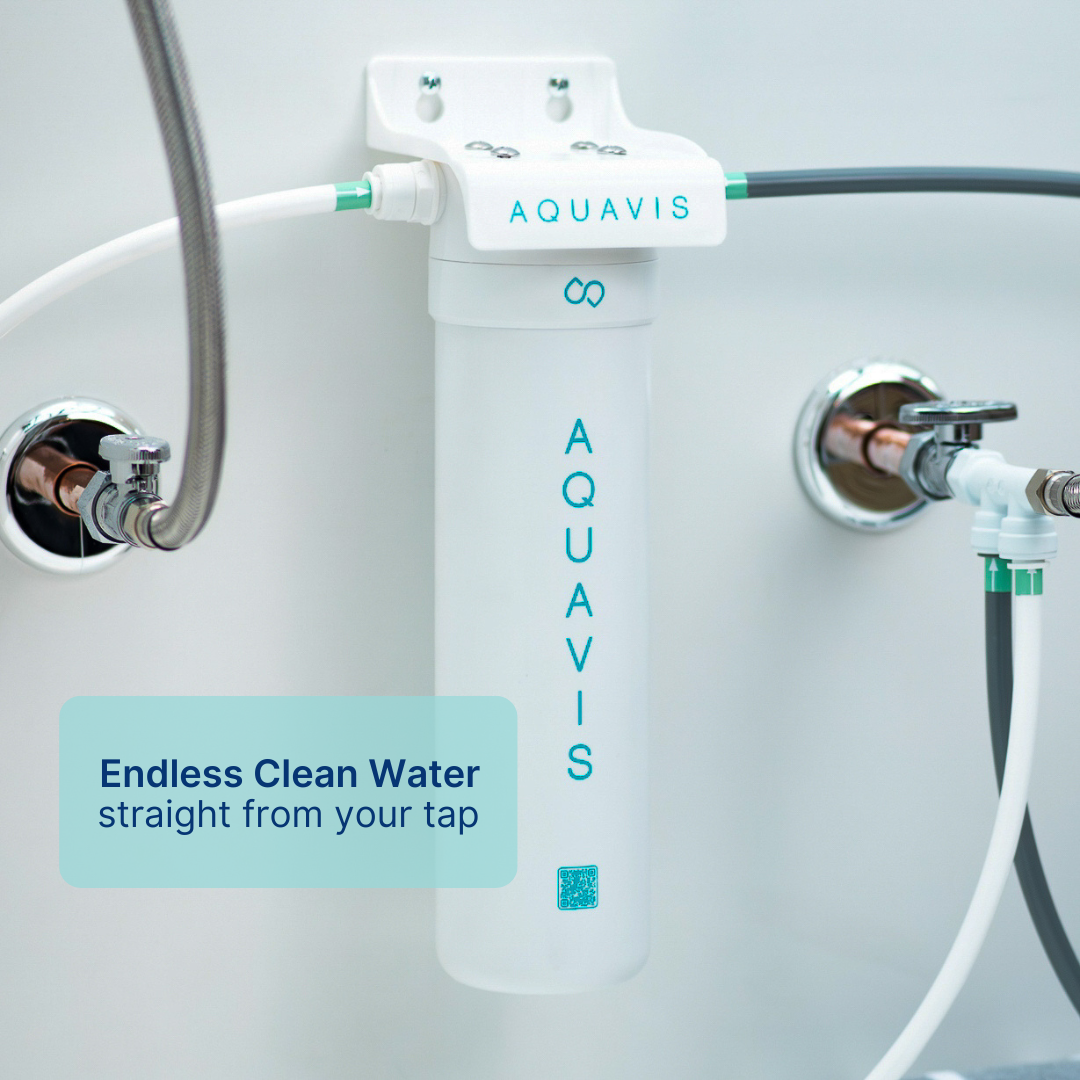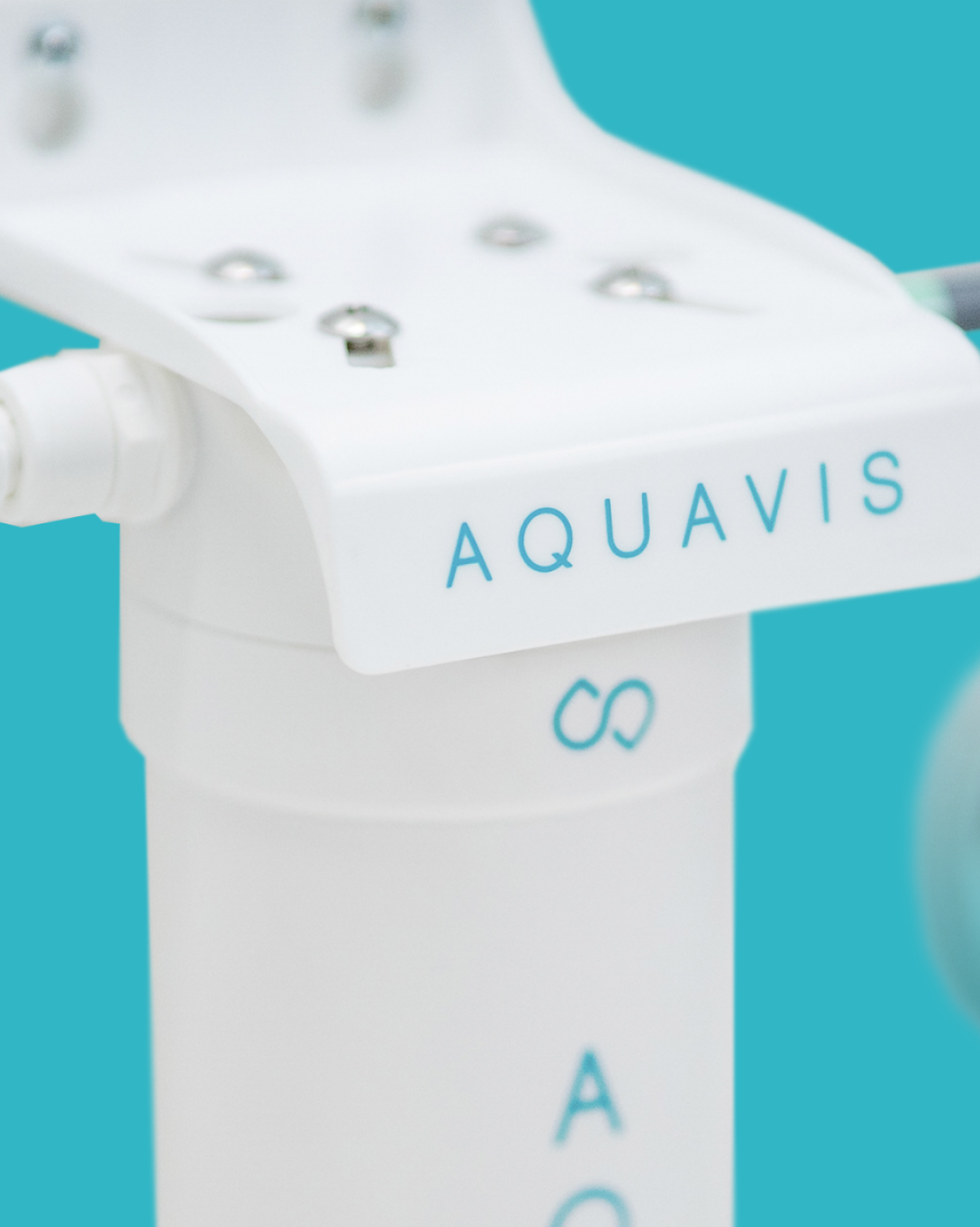Between microplastics, persistent chemicals, and heavy metals, the contaminants in drinking water are becoming increasingly threatening to human health. And while PFAS levels in water are legislated to decrease in the next five years, that still means five years of these synthetic chemicals in our drinking water. So what's the solution? Are there water filters that remove PFAS?
First, let's talk about what PFAS actually are, where they come from, and if they're in your water.
What Are PFAS, PFOA, and PFOS?
PFAS (per- and poly-fluoroalkyl substances) are a group of man-made chemicals, including two main compounds: perfluorooctanoic acid (PFOA) and perfluorooctanesulfonic acid (PFOS). These chemicals have been used extensively in industry and consumer products since the 1940s for their ability to resist heat, oil, stains, grease, and water.
Common uses for these chemicals include non-stick cookware, stain-resistant carpets and fabrics, waterproof clothing, and fire-fighting foams. These chemicals do not break down in the environment or in the human body, leading to widespread persistence.
The accumulation of PFAS in the environment and the human body has posed several health effects, such as hormone disruption, cancer, decreased immune system, reproductive disorders, and developmental disorders in children.
How Does PFAS Get into Drinking Water?
Because PFAS are prevalent in industry and commercial use, they can easily enter our drinking water supplies. Industrial sites, such as manufacturing facilities, airports, and military bases where PFAS have been used or produced, are primary PFAS pollution sources. These chemicals can leach into soil, contaminating groundwater, surface waters, and other community drinking water sources.
In areas where PFAS-containing firefighting foam has been used extensively, especially in training exercises, high levels of these substances can be found in nearby water systems. Once PFAS enter the water supply, their stable chemical structure makes them extremely difficult to remove, and they can easily spread through vast water networks.
How to Find Out if There Are PFAS in Your Water
Identifying PFAS in your water starts by checking the levels in your area. Many utilities now routinely test for PFAS compounds and must make this data available to consumers. Alternatively, independent laboratories offer testing services for homeowners concerned about PFAS.
At-home testing kits can also indicate whether or not PFAS are present in drinking water, although they may not pinpoint precise amounts or specific types of PFAS. Being informed about the levels and types of PFAS in your water is the first step in addressing the issue.
How Do You Get PFAS Out of Your Drinking Water?
Fortunately, there are a few solutions to effectively remove PFAS from drinking water. Activated carbon filters, which operate by adsorbing contaminants in water onto carbon granules, are effective against many PFAS compounds, particularly PFOA and PFOS.
Reverse osmosis systems offer another solution, using a semipermeable membrane to remove these and other fine particulates from water. Ion exchange filters, which replace harmful PFAS ions with harmless ones, are also used, especially in industrial or public water systems.
How to Remove PFAS Chemicals at Home
If you're looking to mitigate PFAS exposure at home, installing point-of-entry or point-of-use filtration systems can be highly effective. Point-of-entry systems treat water as it enters a home, protecting all water sources, while point-of-use systems, such as the under-sink Aquavis Pulse, treat water at the point it is consumed. Both systems use filtration systems, such as activated carbon and reverse osmosis, to maximize PFAS removal.
So, how do you choose the best system to keep your family safe from PFAS? Understanding the PFAS levels in your water, your budget, and your family's water needs can guide the selection of the most appropriate filtration technology.
Not All In-Home Water Filters Are Created Equal
Not all water filters effectively remove contaminants from water. When selecting a filter for your home, verifying that they are specifically designed to remove PFAS is vital. Look for products that have been independently tested and certified for PFAS reduction. This ensures that the filter meets specific performance standards and is capable of reducing these harmful chemicals to safe levels.
Additionally, checking for certifications from reputable organizations can provide further assurance of the filter’s efficacy and reliability in protecting your family’s health.
Water Filters That Remove PFAS
A few different filtration systems can provide your family with clean water.
Reverse osmosis: Reverse osmosis systems remove several contaminants, including PFAS. These systems can filter out contaminants that are mere atoms thick, making them effective against PFAS, but removing essential vitamins and minerals.
Activated carbon: Activated carbon filters like the Aquavis Pulse also remove significant amounts of PFAS while keeping the helpful minerals. The activated carbon technology in the Aquavis Pulse adsorbs contaminants onto the carbon surface, ridding your tap water of harmful chemicals like PFAS.
As a point-of-use filter, many activated carbon filters are more cost-effective than RO systems. These systems can be particularly effective for targeted PFAS compounds that are a concern in your area.
Ion exchange: Ion exchange filters are another effective method for removing PFAS from drinking water. These filters work by exchanging harmful PFAS molecules with harmless ions, typically chloride or hydroxide.
Which Filter Is Best for Me?
Choosing the best water filter for PFAS removal depends on your specific water contamination levels, household water usage, and budget.
Reverse osmosis systems are known for their extensive purification capabilities, particularly in areas with known high PFAS contamination, but they might over-purify tap water and are often more costly and maintenance-heavy.
For lower contamination levels, high-quality activated carbon filters provide an economical solution. These under-sink water filters can cleanse up to 500 gallons of water per filter replacement, giving your family tasty, clean, and cost-effective water. Systems like the Aquavis Pulse can be installed in minutes without any professional help.
Why Choose Aquavis?
At Aquavis, we know how important it is to keep your family healthy. That's why we created the Aquavis Pulse. When it comes to ensuring the safety and purity of your drinking water, the Aquavis Pulse stands out as a leader in effective water filtration solutions. Our state-of-the-art activated carbon filters are specifically designed to tackle the toughest contaminants like PFAS, cysts, VOCs, and heavy metals.
If your public water source contains high levels of PFAS, Aquavis can help. With Aquavis, your family can start enjoying clean, tasty, healthy water in a matter of minutes. Help your family avoid the potential health impacts of dangerous contaminants like PFAS—choose Aquavis today!



